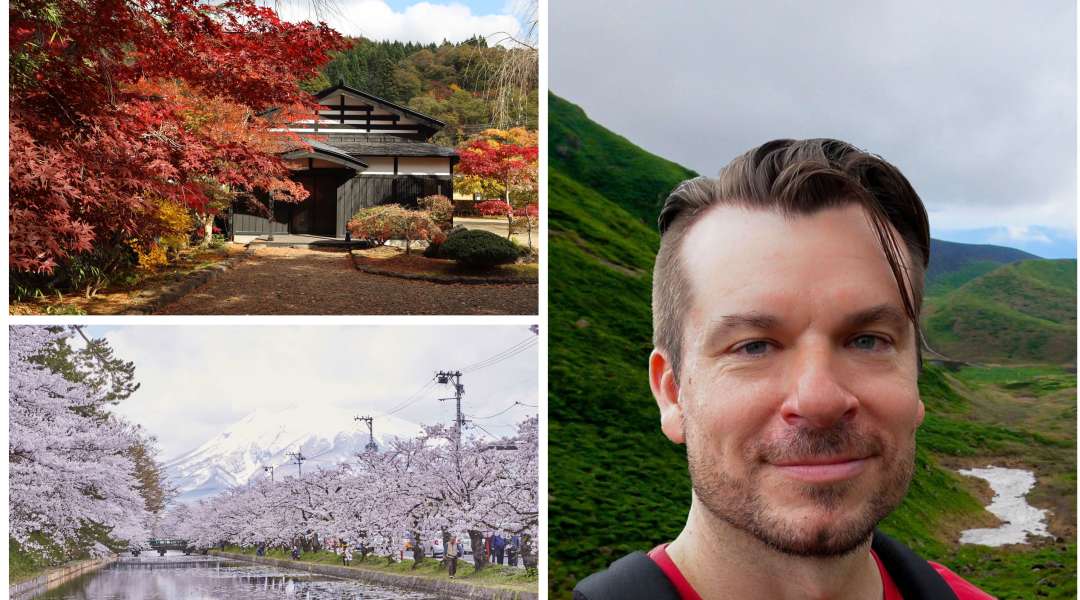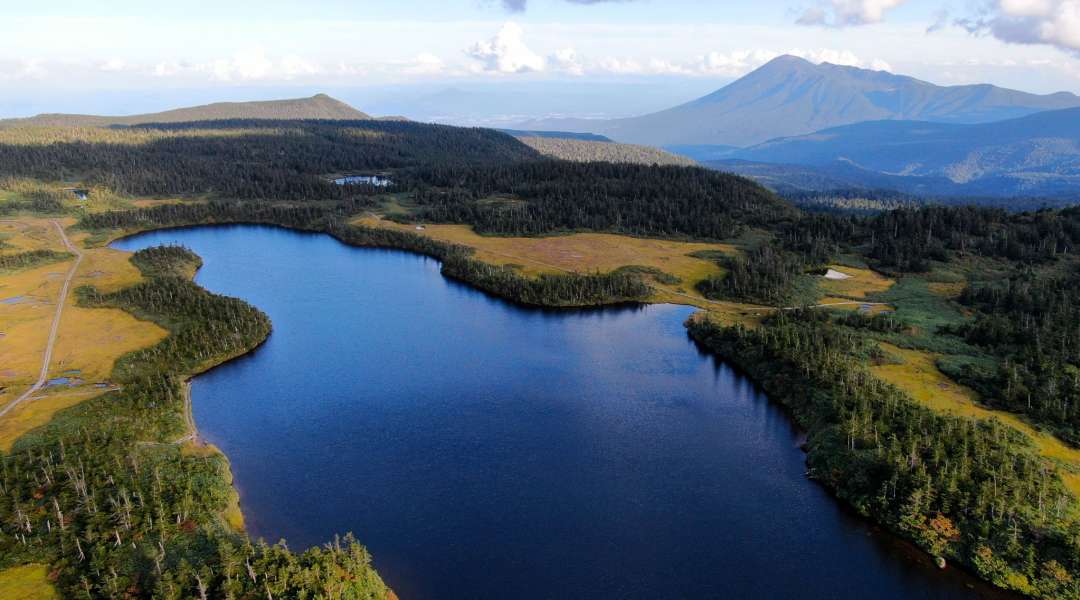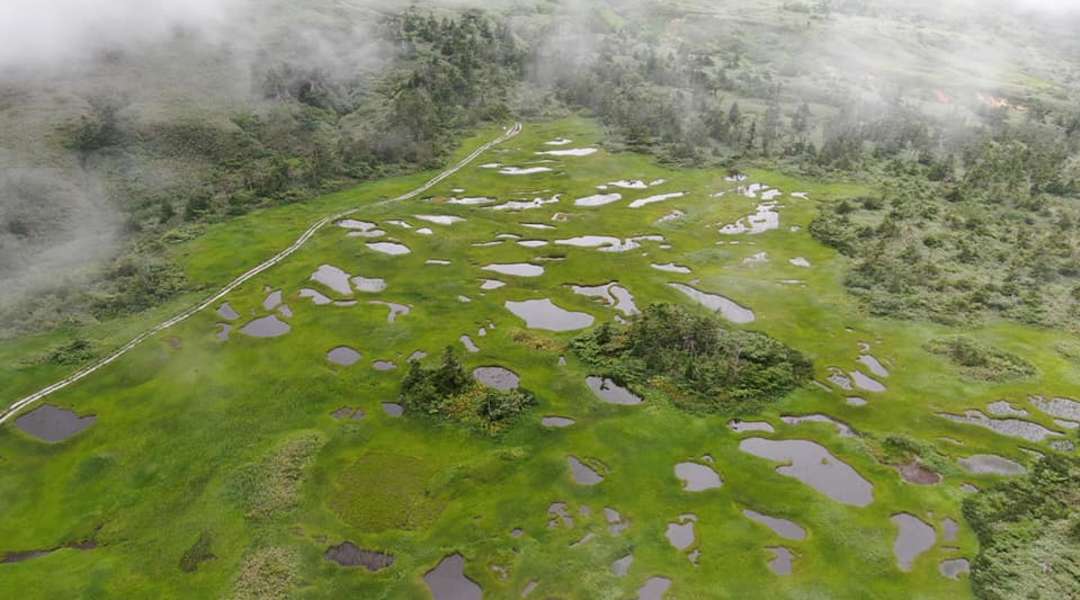
Quinlan came to Japan from the US 20 years ago and he's a real one-man band. He's been self-employed for 19 years, he works as a translator, guide, actor, runs the 'GoNorth Japan' YouTube channel and...he also runs a small Airbnb in Tohoku's Morioka! Recently he's been involved with a local initiative called 'Iwate, the Last Frontier'. We talked to Quinlan about his favourite places to see cherry blossoms, who inspired him to start a YouTube channel (you'll be surprised) and asked him for some recomendations for first-time visitors!

Hi, thanks for talking to us today. Could you tell us a little about yourself?
Born and raised in the upper Midwest region of the United States, I studied Classical Tibetan Language and Buddhism in university, and after a 10-month stay in China, moved to Japan in September of 2000. I’m currently living up in Morioka, a city in the Tohoku region (almost like the upper midwest of Japan). I’ve been self employed for 19 of my 20 years in Japan, and I work as a translator, guide, narrator, and occassional TV actor. (I also own a small Airbnb.)

What drew you to working and living in Japan? How did you find it?
In my early 20s I was really interested in Tibet, Nepal, and India and planned to work to save up money to spend a year or two there. I had a close friend that was Japanese that suggested I work in Japan for a year to save up money. So I moved to Tokyo without speaking a word of Japanese! After a little less than a year of working as an English teacher, I ended up starting a small ecommerce business and had fallen in love with life in Japan. In particular I loved the festivals, shitamachi (old downtown) culture, food, and just general excitement of learning about a new place. I ended up never wanting to move to India or Nepal - though I have visited numerous times.

How did your YouTube channel 'GoNorth Japan' come about?
I bought a house at the end of 2015, and started an Airbnb there in April of 2016. I live there as well, so I’m just providing 2 rather nice Japanese tatami rooms for guests and the living and dining rooms are shared space. In late 2016, Chris Broad, a famous Japan-based British YouTuber (of the channel Abroad in Japan), stayed at my house for a few days while filming in Iwate. We ended up hanging out while he was here, and he suggested that I start a Youtube channel as well.
While I liked the idea, it was until April 2019 that I finally published my first video on YouTube. Over the last couple years I’ve spent more and more time filming and editing videos. It’s become a big part of what I do recently.
I’m really passionate about sharing the parts of Japan that I love, and with the 'GoNorth Japan' YouTube channel, I’m able to do just that. Most of the videos are currently focused on hiking in the mountains and coastal areas of Tohoku, but after the pandemic I plan to do more around culture and history, with interviews of local artisans and other Japanese individuals. (I also have a series of conversations with a Zen Buddhist monk.)

We hear you are involved in a project called ‘Iwate, the Last Frontier’. Can you tell us more about it and explain how you got involved?
Iwate, the Last Frontier is a project initiated by a local travel agency, Michinori Travel, with the cooperation of local professionals to create activities and experiential tours that allow visitors to enjoy exploring Iwate while getting a real sense of this unique place. At present, only 2% of foreign tourists visit Iwate, and it’s the largest prefecture on the main island!
I coined the name ‘Iwate, the Last Frontier’ as I really feel like this is one of the last unexplored areas of Japan that remains untouched by the waves of tourism that the rest of the country has experienced. Among our group we have one of the first people to bring sustainable tourism practices to Japan, and are devoted to sharing the magic of this place with visitors in an ecological, responsible manner. The project is still in its infancy, but after the pandemic is over we’ll be moving forward more quickly.

You run an Airbnb in Morioka. What kind of spots or experiences do you always recommend to your guests?
Most guests come with a JR Rail Pass, so I am able to recommend day trips to places as far away as Kakunodate, Akita (which has a great samurai district) and Hiraizumi (famous for numerous ancient temples including a Golden Pavillion). If possible, I recommend that people rent a car so they can get out to inaccessible places like the Sanriku Coast- to see towering 200 meter cliffs with hand-carved tunnels connecting numerous hidden beaches, the mysterious town of Tono – a pastoral village of myths and legends, and more! At night, Morioka has the best places to eat in the prefecture! I often find out what kind of cuisine people are interested in and make reservations for them at stunning local places that tourists would generally never be able to locate. (I’m also a certified international sake sommlier, so I make recommendations regarding Japanese sake as well.)

Any unexpected funny incidents or stories you've had while living in Tohoku?
Aside from bumping to bears and Japanese Serow from time to time, there have been a few incidents that taught me about the culture here. About 9 years ago, when I was living in the countryside of Hanamki, an old man that lived nearby offered me an old bicycle that he said ‘was just taking up space in his shed.’ Sometimes my family visited from abroad, so I was happy to get an extra bike. I thanked him and offered to pay for it, but he refused, repeating that I was rather doing him a favor by taking it off his hands. I realized that I would be expected to give him a gift in return, and planned to give him a six-pack of beer as I knew that he liked to drink. But I got a bit busy and a week passed. This apparently was too much time, and the bike giver came by and said, ‘Were you able to use the bike? It was just taking up space. No need to thank me.’ A Japanese friend was visiting at the time and after he left, helpful translate the true meaning of this as ‘Where’s my beer?’ I immediately went out and bought a sickpack, and delivered it to his house. He accepted it with nonchalance, sort of nodding in satisfaction…
This took place around 2011. Since then I’ve talked to other foreigners who’ve had similar experiences. After receiving a gift that they didn’t repay in time, the giver would ask them if they liked it, which was loose code for ‘where’s my payback gift??’

What places (other than Iwate) would you recommend to first time visitors in Japan?
Other than Iwate?! How about Akita? Just joking, I assume you mean in a different region of Japan. I think Aizu Wakamatsu in Fukushima is really worth visiting. Great castle, exciting history, easy to get around by bus and on foot. Kanazawa is another great city, and I think it’s becoming quite popular among tourists now as well.

Our word of the month is ‘hanafubuki’ meaning a blossom blizzard and used for when the wind catches falling petals in a flurry. What's your go-to place to see spring blossoms in Japan?
There are three really famous places in Tohoku that are of course all amazing. In Kitakami there’s a place called Tenshochi, which has about a 2km tunnel of cherry blossoms. Needless to say it’s breathtaking. In Kakunodate, they have cherry blossoms, many of them ‘weeping cherry’ or shidarezakura in Japanese, that are gorgeous, and of course the park surrounding the castle in Hirosaki is just breathtaking. That said, here in Morioka there are two spots that are best for cherry blossom viewing, Iwate Park (the old castle site where now only the original stone walls remain), and Takamtasu no Ike Park, which has a beautiful little pond surrounded by cherry blossoms.
You can find Quinlan on his YouTube channel, Instagram, Twitter or check out his Airbnb!


























































